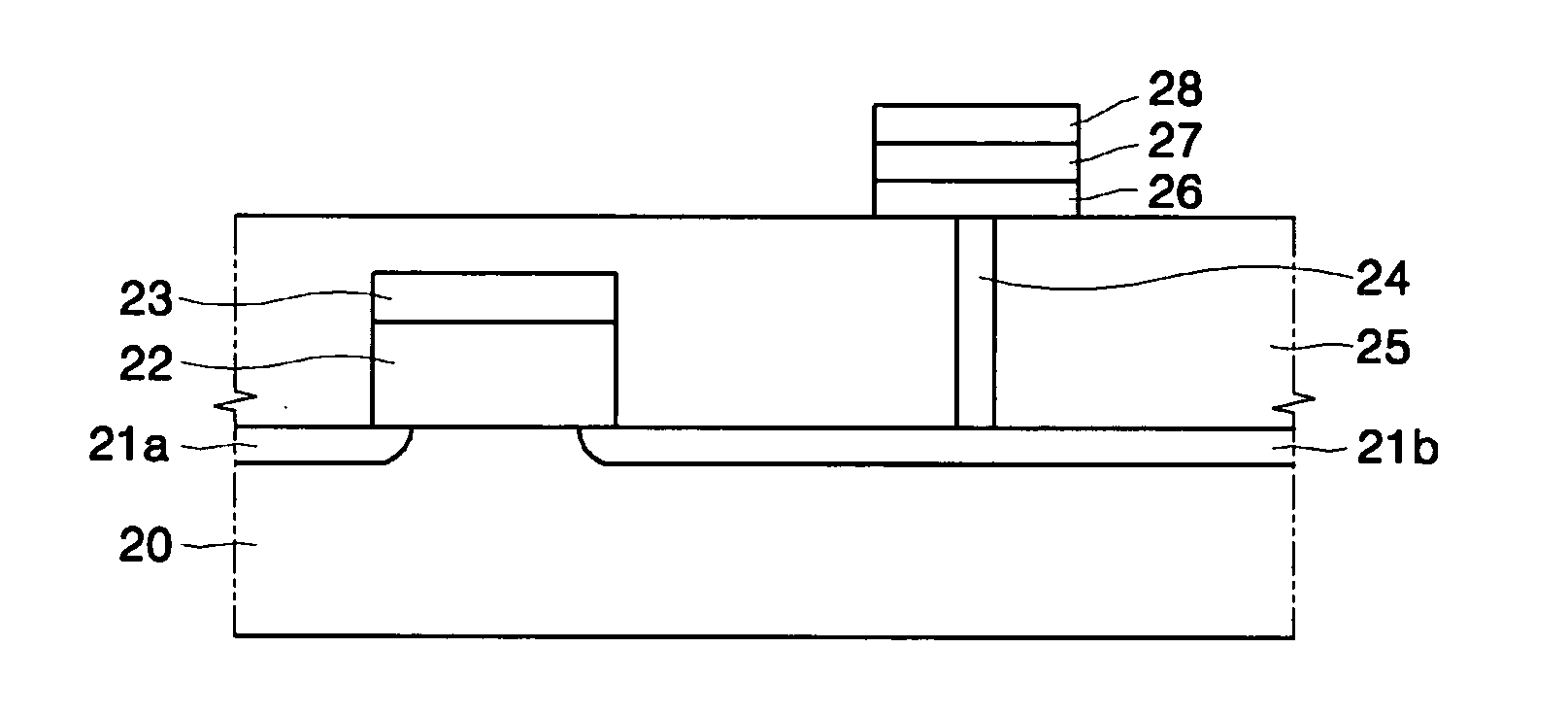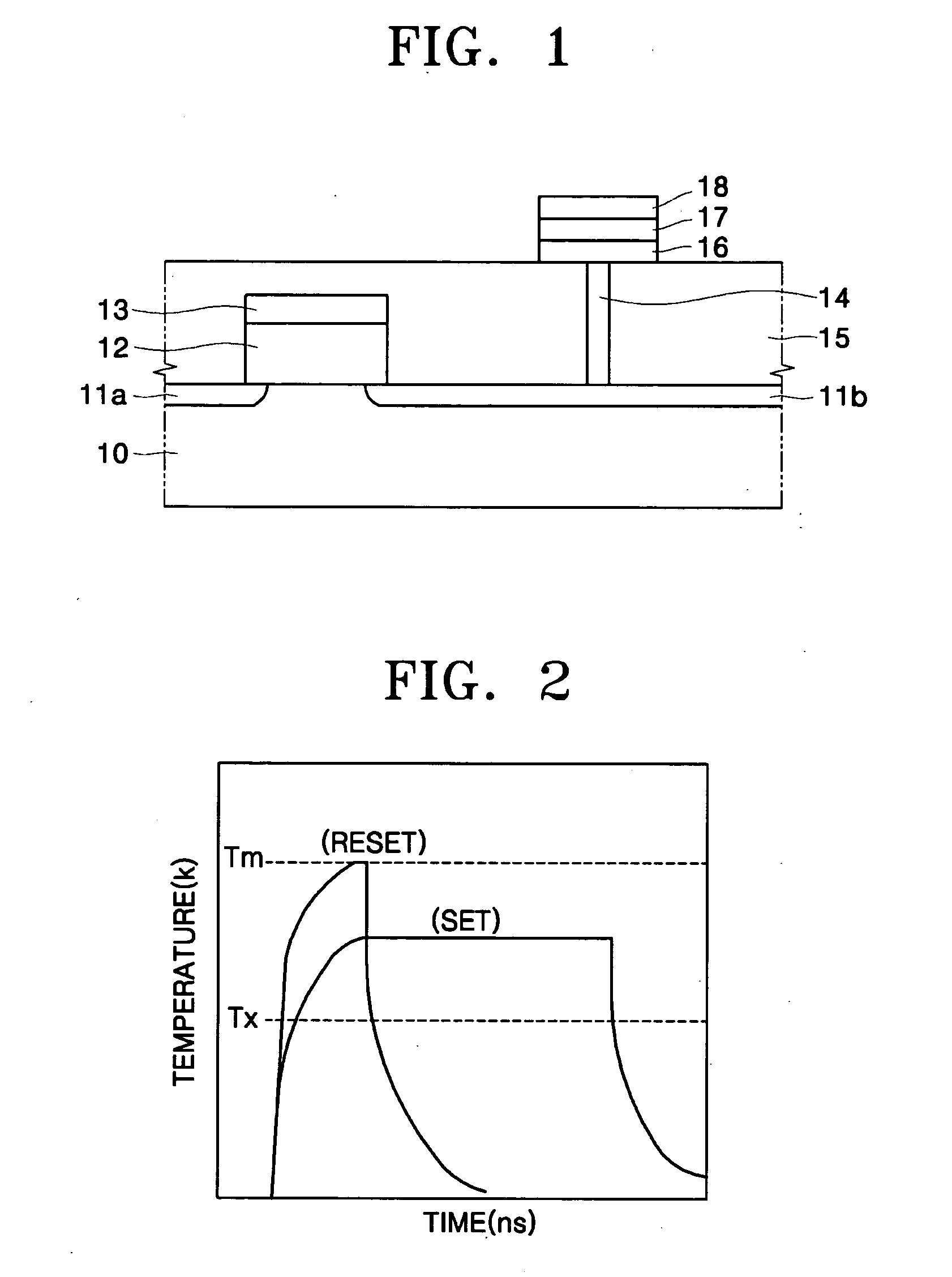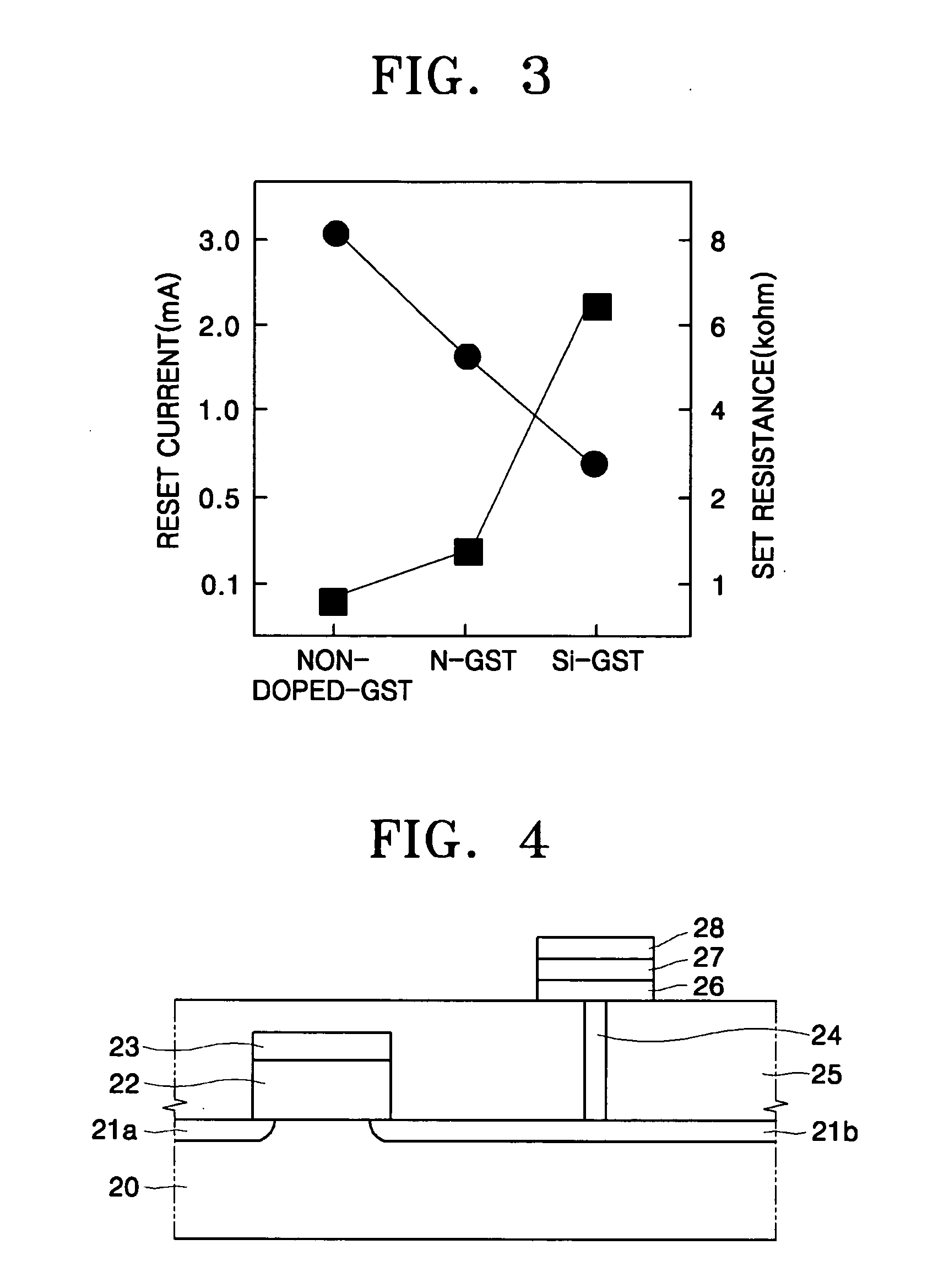Ge precursor, GST thin layer formed using the same, phase-change memory device including the GST thin layer, and method of manufacturing the GST thin layer
a technology of gst and precursor, which is applied in the direction of germanium organic compounds, organic chemistry, coatings, etc., to achieve good performance characteristics
- Summary
- Abstract
- Description
- Claims
- Application Information
AI Technical Summary
Benefits of technology
Problems solved by technology
Method used
Image
Examples
embodiments
Embodiment 1
[0061]
[0062] In Reaction Scheme 1, a solution of 0.1 moles of hexamethyldisilazane in 1000 ml of hexane and 0.2 mole of nBu—Li were mixed at room pressure and −78°, and then reacted for 4 hours at room temperature. As a result, the compound of formula 3′ was produced.
[0063] In Reaction Scheme 2, 0.5 mole of the compound of formula 3′ and 0.1 mole of GeCl4 were mixed in 1000 ml of THF, reacted at 150° C. for 8 hours, and dried in a vacuum at room temperature. The resultant product was purified by fractional distillation at 0.1 torr and 60° C. to obtain 38 g of the compound of formula 3, that is, Ge[N(Si(CH3)3)2]4. Then, the compound of formula 3 was identified by 1H-NMR and 13C-NMR, all of which were performed at 25° C. with C6D6. The results are shown in FIGS. 5A and 5B, respectively. Referring to FIGS. 5a and 5b, the presence of a Ge—N bond and a N—Si bond in the compound of formula 3 can be confirmed. The compound of formula 3 refers to a Ge precursor 1.
example 1
MEASUREMENT EXAMPLE 1
Thermal Decomposition Characteristics
[0066] The thermal decomposition characteristics of Ge precursors A, B, and 1 were measured. The results are shown in FIG. 6. The thermal decomposition was performed at 400° C. in a He atmosphere in an injection chamber system. The results were measured using gas chromatography. In FIG. 6, (a) illustrates a peak of Ge(CH3)4 that is the Ge precursor A, (b) illustrates a peak of Ge[N(CH3)2]4 that is the Ge precursor B, and (c) illustrates a peak of Ge[N(Si(CH3)3)2]4 that is the Ge precursor 1. Comparing (c) to (a) and (b), it was confirmed that the Ge precursor 1 according to an embodiment of the present invention decomposed in a shorter time than Ge precursors A and B. That is, since the rate of thermal decomposition of Ge precursor 1 according to an embodiment of the preset invention is higher than those of the conventional Ge precursors A and B, the Ge precursor 1 is more suitable for CVD or ALD.
example 2
MEASUREMENT EXAMPLE 2
Layer Forming Ability at a Low Temperature
[0067] The layer forming ability was measured using the Ge precursor A, and the Ge precursor 1. At this time, ALD was used. First, under deposition conditions shown in Table 1 below, a Ge thin layer was formed by ALD using Ge precursor A. Separately, a Ge thin layer doped with N and Si was formed using the Ge precursor 1 under the conditions and the method described above. Then, SEM images of cross sections of the two Ge thin layers were taken. The results are shown in FIGS. 7A and 7B. In particular, H2 was used as shown in Table 1.
TABLE 1Deposition Temperature250° C.Deposition Cycle250 timesProcessing Period0.006 / 3 / 1 / 1Ar influx500 sccmH2 influx300 sccm
[0068] Referring to FIG. 7A, forming a Ge thin layer was not properly achieved because the deposition temperature is low, such as 250° C. shown in Table 1. Referring to FIG. 7B, the Ge thin layer formed from the Ge precursor 1 was formed to a thickness of about 330 Å an...
PUM
| Property | Measurement | Unit |
|---|---|---|
| temperature | aaaaa | aaaaa |
| reset current | aaaaa | aaaaa |
| reset current | aaaaa | aaaaa |
Abstract
Description
Claims
Application Information
 Login to View More
Login to View More - R&D
- Intellectual Property
- Life Sciences
- Materials
- Tech Scout
- Unparalleled Data Quality
- Higher Quality Content
- 60% Fewer Hallucinations
Browse by: Latest US Patents, China's latest patents, Technical Efficacy Thesaurus, Application Domain, Technology Topic, Popular Technical Reports.
© 2025 PatSnap. All rights reserved.Legal|Privacy policy|Modern Slavery Act Transparency Statement|Sitemap|About US| Contact US: help@patsnap.com



